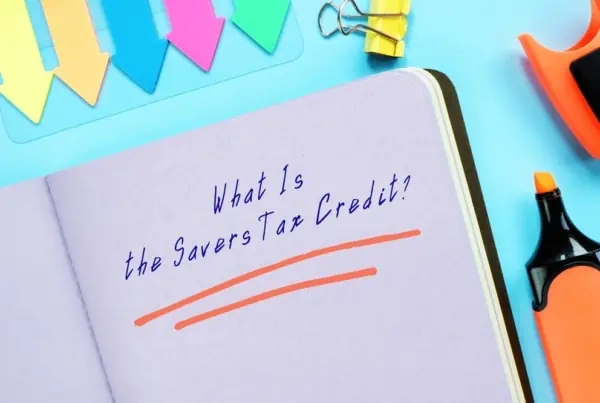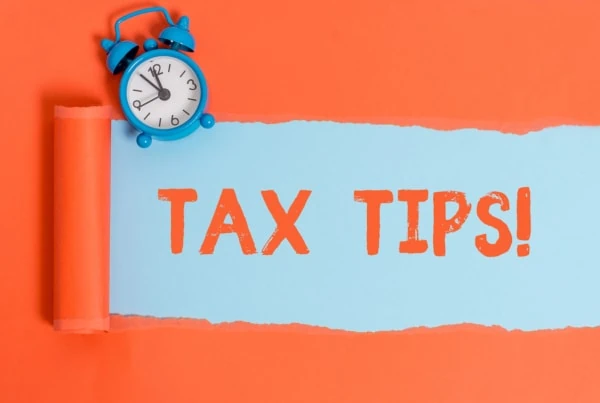The 2024 tax season is upon us and there’s plenty of time to get your return prepared and filed. However, that doesn’t mean you’ll have the time to get it done by filing day (April 15, 2025), and you shouldn’t panic if you’re not ready to file your return by then. Simply file a tax extension request and buy yourself some more time.
It’s easy to get an extension of time to file your tax return. You just have to file an IRS form or make a tax payment electronically before the tax filing deadline. Do that, and the due date for your 2024 federal return is pushed back to Oct. 15, 2025.
And here’s the best part: You don’t even need a good reason for requesting a tax extension.
Your dog ate your W-2 form? No problem. You’re traveling the world for the next six months? Fine. You’re just a procrastinator by nature. That’s OK. If you follow the proper instructions and submit your tax extension request on time, you’ll get an automatic tax filing extension … no questions asked!
So, how do you file a tax extension this tax season? Read on to find out. We’ll also cover special rules for people living abroad, serving in a combat zone, or impacted by certain natural disasters. An IRS tax extension is easy to obtain—you just need to know how to grab it.
Related: 2025 Tax Calendar (Tax Deadlines for the Entire Year)
When Is the 2025 Tax Deadline?
![How to File a Tax Extension [Postpone Taxes to Oct. 15, 2025] 2 april 15 calendar tax time blocks](https://youngandtheinvested.com/wp-content/uploads/april-15-calendar-tax-time-blocks.webp)
Before getting into how you can extend the tax deadline, let’s talk a bit about the deadline … and whether you even need to worry about the deadline to begin with.
For most people, the deadline for filing your 2024 federal income tax return is April 15, 2025.
Here’s the thing, though: Not everyone is required to file a tax return. So, before you get too focused on the tax filing deadline, check to see if you even need to file a return. Depending on your age and filing status, your income might be below the filing requirement threshold, which means you might not have to file a federal tax return this year.
On the other hand, even if you’re not required to file a return, it’s sometimes worth the effort to file one anyway. For instance, you might trigger a tax refund if you can claim one or more of the following tax credits:
- Earned income tax credit
- Credit for federal taxes on fuels
- American Opportunity tax credit
- Premium tax credit
- Additional child tax credit
- Credits for sick and family leave
You might also be due a refund if you had taxes withheld from your paycheck (or other income) or made estimated tax payments in 2024. But you need to file a return to get that refund check!
Related: 30 Tax Statistics and Facts That Might Surprise You
How to File for an Extension: Two Methods
Now let’s discuss the methods for obtaining a federal tax filing extension. In short, you have two choices when it comes to asking the IRS for an extension. They are:
1. Submit IRS Form 4868: Application for Automatic Extension of Time To File U.S. Individual Income Tax Return
![How to File a Tax Extension [Postpone Taxes to Oct. 15, 2025] 3 form 4868 tax extension](https://youngandtheinvested.com/wp-content/uploads/form-4868-tax-extension.webp)
Submitting Form 4868 is the most common method of filing a tax extension. You can either mail a paper form to the IRS or file electronically to receive an automatic six-month extension. However, for 2024 tax returns, you have to act no later than the April 15, 2025, deadline for filing your federal return.
It’s generally easier and faster to file an extension electronically, and the IRS does a better job of processing electronic tax forms, so I highly recommend that you file electronically. The IRS will also send you a confirmation number if you electronically request a federal tax extension, but they won’t acknowledge the receipt of a paper form.
With either a paper or electronic tax extension, the IRS will contact you only if your request for an extension is denied.
How to file Form 4868 electronically
There are a few ways to obtain federal tax extensions online. You can hire a tax professional to file Form 4868 electronically and send your tax extension information to the IRS. You can also use commercial tax preparation software, such as TurboTax or H&R Block, to prepare and e-file the tax extension form yourself. If you want to save a few bucks, tax software is also available for free on the IRS website through the tax agency’s Free File program. (By the way, if you’re looking for the right tax software for you, check out our review of the best tax software products available.)
Have a copy of your federal tax return from the previous tax year ready if you plan to file Form 4868 electronically. You’ll be asked to provide information from that return to verify your identity.
|
Primary Rating:
4.7
|
Primary Rating:
4.6
|
|
DIY Options: $0-$71.20.* TurboTax Live Assisted ($0-$135.20) and TurboTax Live Full Service (Starting at $80.10) also available.** State filings are additional charges for paid products.***
|
DIY Options: Free: $0. Deluxe + State: $49. Premium: $75. Self-Employed: $89.* Online Assist, In-Person Assistance, and Drop-Off also available.**
|
Where to send a paper Form 4868
If you really want to file a paper Form 4868, make sure you send the extension form to the correct address. There are eight different IRS addresses for 2023 tax year paper tax extension forms. Which one you should use depends on where you live and whether you’re sending a tax payment with the form.
You can use one of three authorized private delivery services to mail a paper Form 4868: UPS, FedEx, or DHL Express. However, since private delivery services can’t deliver items to a P.O. box, you’ll need to look up an alternative mailing address on the IRS website. It’s also a good idea to check with the private delivery service about getting written proof of the mailing date.
Tax payments are not extended by automatic tax filing extension
This is very important: An automatic extension extends the date for filing your return, but it normally does not extend the date for paying taxes. As a result, if you expect to owe taxes when you eventually submit your tax return by the extended deadline, you still must pay the taxes owed by the original April 15 deadline.
You’ll get credit for any payments made by the original due date when you eventually file your tax return by the extended tax deadline. For the 2024 tax year, enter the tax payment amount on Line 10 of Schedule 3 (Form 1040). Don’t include any convenience fees charged for paying taxes with a debit or credit card.
Related: Tax Preparation Checklist [Get Ready For Your 2024 Tax Return]
2. Tax Extension by Electronic Tax Payment
![How to File a Tax Extension [Postpone Taxes to Oct. 15, 2025] 8 IRS help taxes](https://youngandtheinvested.com/wp-content/uploads/IRS-help-taxes.webp)
Instead of filing Form 4868, you can also get a federal extension by making a tax payment electronically. You’ll first have to estimate your total tax liability for the tax year. Then pay all or part of the estimated tax bill using either:
- Direct Pay (direct transfer from your bank account)
- Electronic Federal Tax Payment System (direct transfer from your bank account)
- Debit or credit card (fees apply)
You can also pay by phone using the Electronic Federal Tax Payment System or by calling one of the debit/credit card payment processors approved by the IRS.
No matter which method you use, be sure to indicate that the payment is for a tax extension.
Also make sure your estimate is as accurate as possible. If the IRS later determines that your estimate wasn’t reasonable, the extension to file your federal return might be voided.
Late Payment Penalties
![How to File a Tax Extension [Postpone Taxes to Oct. 15, 2025] 9 late fees charges penalty](https://youngandtheinvested.com/wp-content/uploads/late-fees-charges-penalty.jpg.webp)
If you don’t pay by the original due date (or don’t pay the full amount), not only will you owe interest on the unpaid tax, but you might also be hit with a late payment penalty equal to 0.5% of your total tax liability for each month the tax remains unpaid. Late payment penalties won’t exceed 25% of your unpaid taxes, though.
If the taxes owed aren’t paid within 10 days of getting a levy notice from the IRS, the late payment penalty jumps to 1% per month. On the other hand, the penalty rate drops to 0.25% per month if a payment plan is in effect. In addition, if a late filing penalty also applies for any given month, the penalty for filing late is reduced by the amount of the penalty for paying late.
Fortunately, late payment penalties can be waived or reduced if you had a good reason for not paying your tax bill on time (e.g., fire in your home, natural disaster, serious illness, etc.). You’ll need to attach a statement explaining the reason to your tax return when it’s filed. If you file a tax extension request, the IRS will also waive the penalty for the six-month automatic extension period if both of the following requirements are met:
- At least 90% of the total tax liability for the tax year is paid by the original filing deadline through withholding, estimated tax payments, or payments made with Form 4868
- The remaining balance is paid with your return
Obviously, you won’t be hit with a penalty for paying late if you’re due a tax refund. However, you won’t get your tax refund until you file your tax return. That’s a pretty good incentive for filing your tax return as soon as possible, but you generally have up to three years to file a return and claim a tax refund if you’re in no hurry.
Related: What Tax Bracket Are You In?
Tax Extensions for Americans Living Abroad
![How to File a Tax Extension [Postpone Taxes to Oct. 15, 2025] 10 form 2350 tax extension living abroad](https://youngandtheinvested.com/wp-content/uploads/form-2350-tax-extension-living-abroad.webp)
If you live outside of the country, four different tax extensions are available. You might not need them all, and some are mutually exclusive, but you can potentially kick your tax filing deadline eight months or more down the road if you’re living abroad.
Automatic Two-Month Tax Extension
Taxpayers living in another country might qualify for an automatic two-month extension to file their federal income tax return and pay any taxes owed (although interest will be charged on unpaid taxes from the original due date). For 2024 tax returns, this pushes your tax deadline to June 16, 2025, if you qualify.
So, who’s eligible for this automatic two-month extension? First, you must be a U.S. citizen or resident alien. You must also be either:
- Living outside the U.S. and Puerto Rico, and your main place of business or post of duty is outside the U.S. and Puerto Rico
- In military service on duty outside the U.S. and Puerto Rico
If you satisfy these requirements, you’re still eligible for the tax extension even if you’re physically present in the U.S. or Puerto Rico on Tax Day (April 15, 2025, for 2024 tax returns).
You can also receive this extension without filing a tax extension form. However, you must attach a statement to your tax return explaining how you qualified for the extension.
For married couples filing jointly, only one spouse has to satisfy the requirements to claim this two-month tax extension. For married couples filing separate returns, the extension is only available to a spouse who qualifies on their own.
Additional Four-Month Tax Extension
If you still need more time to finish your tax return beyond the two-month extension, you can get an additional four-month extension by filing Form 4868 before the initial two-month extension expires (make sure you check the box on Line 8). That will give you a total of six extra months to file your return—to Oct. 15, 2025, for 2024 tax returns.
You won’t get more time to pay your tax bill, though. If you expect to owe taxes, you must pay your expected tax liability before June 16 to avoid penalties and interest.
Discretionary Two-Month Tax Extension
What if you’re living abroad, but you still can’t complete your tax return before the six-month period ends? You might be able to get another two-month extension to Dec. 15 (or the next business day if Dec. 15 falls on a weekend or holiday), but it’s not automatic. For instance, you don’t qualify for this discretionary extension if you’ve already been granted an extension of time to file in order to qualify for foreign earned income or housing tax breaks (see below).
You must send a letter to the IRS explaining why you need two more months to file your federal tax return. Send the letter before the six-month extension expires to:
Department of the Treasury
Internal Revenue Service
Austin, TX 73301-0045
You’ll only hear back from the IRS if the tax extension is denied.
Tax Extension to Qualify for Tax Breaks
There’s also an IRS tax extension available for people living abroad who need more time to meet the residency or physical presence requirements for either the foreign earned income exclusion or the foreign housing exclusion or deduction. This IRS extension is open ended, but it generally won’t extend the time to file your tax return for more than 30 days after you reasonably expect to qualify for the exclusion or deduction.
This extension is not automatic—the IRS must approve it. You must file an extension request using Form 2350 to ask for this extension. You can give the form to a local IRS representative or other IRS employee, or mail it to:
Department of the Treasury
Internal Revenue Service
Austin, TX 73301-0045
If you qualify for the automatic two-month tax extension for people living out of the country, file Form 2350 before that two-month extension expires (June 16, 2025, for 2024 tax returns). Otherwise, file the IRS form on or before April 15, 2025. In either case, the IRS recommends filing Form 2350 early enough so that you can still have time to file your return before the due date if the tax extension isn’t approved.
Form 2350 doesn’t extend the time to pay taxes. So, you will owe interest, and penalties might be imposed, on any tax bill not paid by either the original or extended (by two months) due date, whichever applies.
Related: What’s Your Standard Deduction?
Tax Extensions for People Serving in a Combat Zone
![How to File a Tax Extension [Postpone Taxes to Oct. 15, 2025] 11 military soldiers marching](https://youngandtheinvested.com/wp-content/uploads/military-soldiers-marching.webp)
An automatic tax filing and payment extension is available for people who are serving in a combat zone, have qualifying military service outside a combat zone, or are outside the U.S. in a contingency operation. And this tax extension doesn’t just apply to military personnel. It’s also available to merchant marines serving aboard vessels under the Department of Defense’s operational control, Red Cross personnel, accredited correspondents, and other civilians supporting U.S. Armed Forces in a combat zone or contingency operation.
Spouses of people who served in a combat zone or contingency operation generally can claim the extension, too. However, there are two exceptions. The tax extension doesn’t apply to a spouse for either:
- Any tax year beginning more than two years after the date the related area ceases to be a combat zone or the related operation ceases to be a contingency operation
- Any period the qualifying person is hospitalized in the U.S. for injuries incurred in a combat zone or contingency operation
Length of Tax Extension
There’s a two-step process for determining the length of this extension to file and pay taxes. First, your deadline is extended for 180 days after the later of:
- The last day you’re in a combat zone, have qualifying service outside a combat zone, or serve in a contingency operation (or the last day the area qualifies as a combat zone or the operation qualifies as a contingency operation)
- The last day of any continuous hospitalization for an injury from service in a combat zone or contingency operation, or while performing qualifying service outside a combat zone
Second, in addition to the 180 days, your deadline is further extended by the number of days you had left to file and pay taxes when you entered the combat zone.
For example, you generally have 3½ months to file your tax return (Jan. 1 to April 15 in 2025). Any days left in this period when you entered the combat zone, began performing qualifying service outside a combat zone, or began serving in a contingency operation are added to the 180 days. (You get the entire 3½ months if you begin before the start of the year.)
Related: How Are Social Security Benefits Taxed?
Tax Extensions for Victims of Natural Disasters
![How to File a Tax Extension [Postpone Taxes to Oct. 15, 2025] 12 flooded home and car](https://youngandtheinvested.com/wp-content/uploads/flooded-home-and-car.webp)
Victims of certain natural disasters might not need to request an automatic six-month extension this year to delay their tax return filing and tax payment obligations for the 2024 tax year. That’s because the IRS may have already pushed their deadline from April 15 to a later date.
People impacted by specific natural disasters don’t have to file their federal income tax return until June 16, 2025.
State Tax Extensions
![How to File a Tax Extension [Postpone Taxes to Oct. 15, 2025] 13 state taxes road sign with arrow](https://youngandtheinvested.com/wp-content/uploads/state-taxes-road-sign-with-arrow.webp)
Don’t forget about state taxes when you file a request to extend your federal taxes. Unless you live in a state without an income tax, you probably need to request a state tax extension if you’re applying for a federal extension.
In most cases, your state tax liability is based in part on your federal taxes, which means you can’t file your state income tax return until your federal return is completed. So, if your federal return is pushed back, you’ll probably have to get a state extension as well since your state taxes are usually due on the same date as your federal taxes.
There are a few states where you might not need a state tax extension just because you got a federal tax extension. That’s because some state tax returns aren’t due until after the federal deadline.
| State | Filing Deadline |
|---|---|
| Delaware | April 30, 2025 |
| Hawaii | April 21, 2025 |
| Iowa | April 30, 2025 |
| Louisiana | May 15, 2025 |
| New Mexico | April 30, 2025 (if e-filed) |
| Virginia | May 1, 2025 |
As a result, if you extend your 2024 federal tax return past the April 15 deadline, but can complete it (and your state return) before the state tax deadline, then you won’t need a state extension.
Related: States That Tax Social Security Benefits
Reasons to File a Tax Extension
![How to File a Tax Extension [Postpone Taxes to Oct. 15, 2025] 14 medium have to file taxes](https://youngandtheinvested.com/wp-content/uploads/med-have-to-file-taxes.webp)
While the IRS doesn’t require a good reason for filing an extension request, you probably ought to have one anyway. Pushing back the tax filing deadline just for the sake of it doesn’t make sense. You still have to pay up if you will owe taxes, you’ll have to wait longer for any tax refund, and you’ll have to worry about taxes for a longer period of time. It’s better to just get it out of the way if you can.
But, of course, there are legitimate reasons to file a tax extension and kick the can down the road. If, for instance, you don’t have all your tax documents by the due date, then by all means you should file an extension and wait until all your tax forms and other tax information arrive to complete your tax return. If important tax records are lost or destroyed, that’s another good reason for filing a tax extension.
If you can’t complete your tax return because you or someone in your family is seriously ill, then that’s another excellent reason to file a tax extension. A death in the family would also trigger a legitimate tax extension if it prevents you from filing your tax return on time.
Sometimes your tax return is just so complicated that you need more time to figure things out—or find a tax professional to help you. That’s a good reason, too.
The point is that it’s fine to file an extension request if you can’t complete your tax return by the deadline, but don’t extend the due date just because you don’t want to do it by then.
Related:




![How to File a Tax Extension [Postpone Taxes to Oct. 15, 2025] 1 how to file tax extension](https://youngandtheinvested.com/wp-content/uploads/how-to-file-tax-extension-584x389.webp)
![How to File a Tax Extension [Postpone Taxes to Oct. 15, 2025] 4 TurboTax | Leading Tax Software](https://youngandtheinvested.com/wp-content/uploads/turbotax-logo-transparent-symbol.webp)
![How to File a Tax Extension [Postpone Taxes to Oct. 15, 2025] 5 H&R Block | Online + In-Person Tax Filing](https://youngandtheinvested.com/wp-content/uploads/h-and-r-block-logo.webp)



